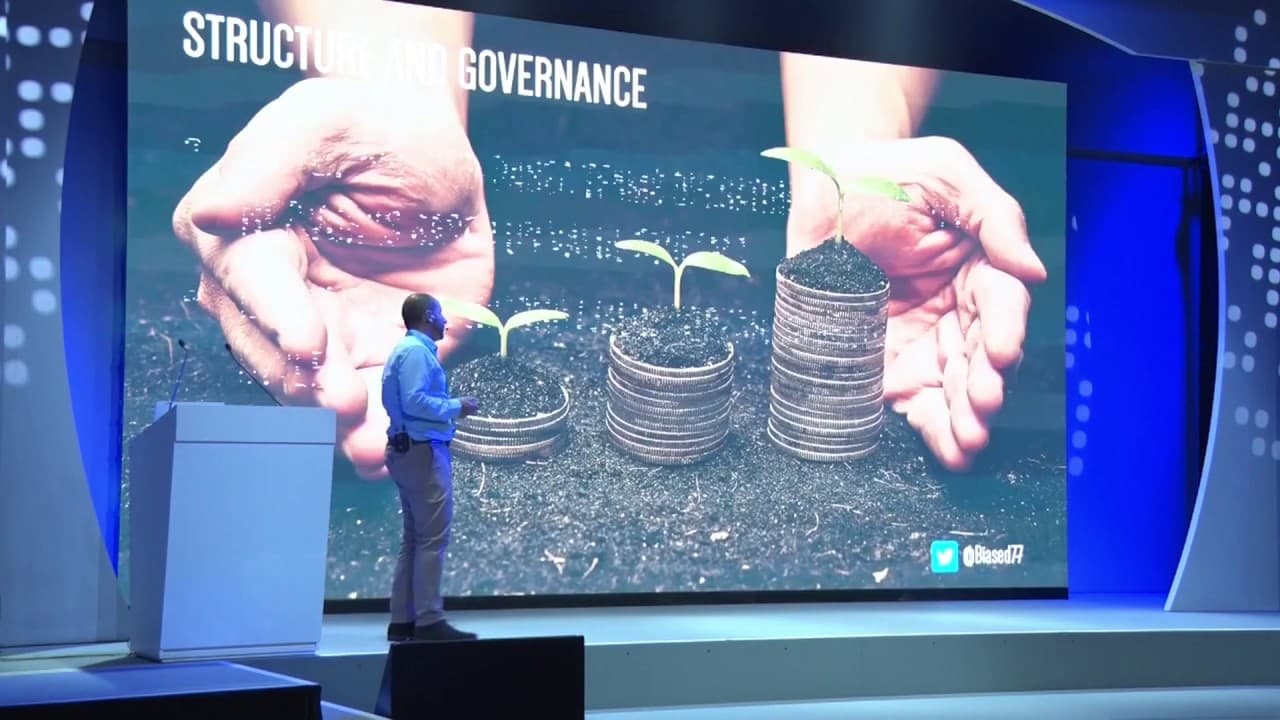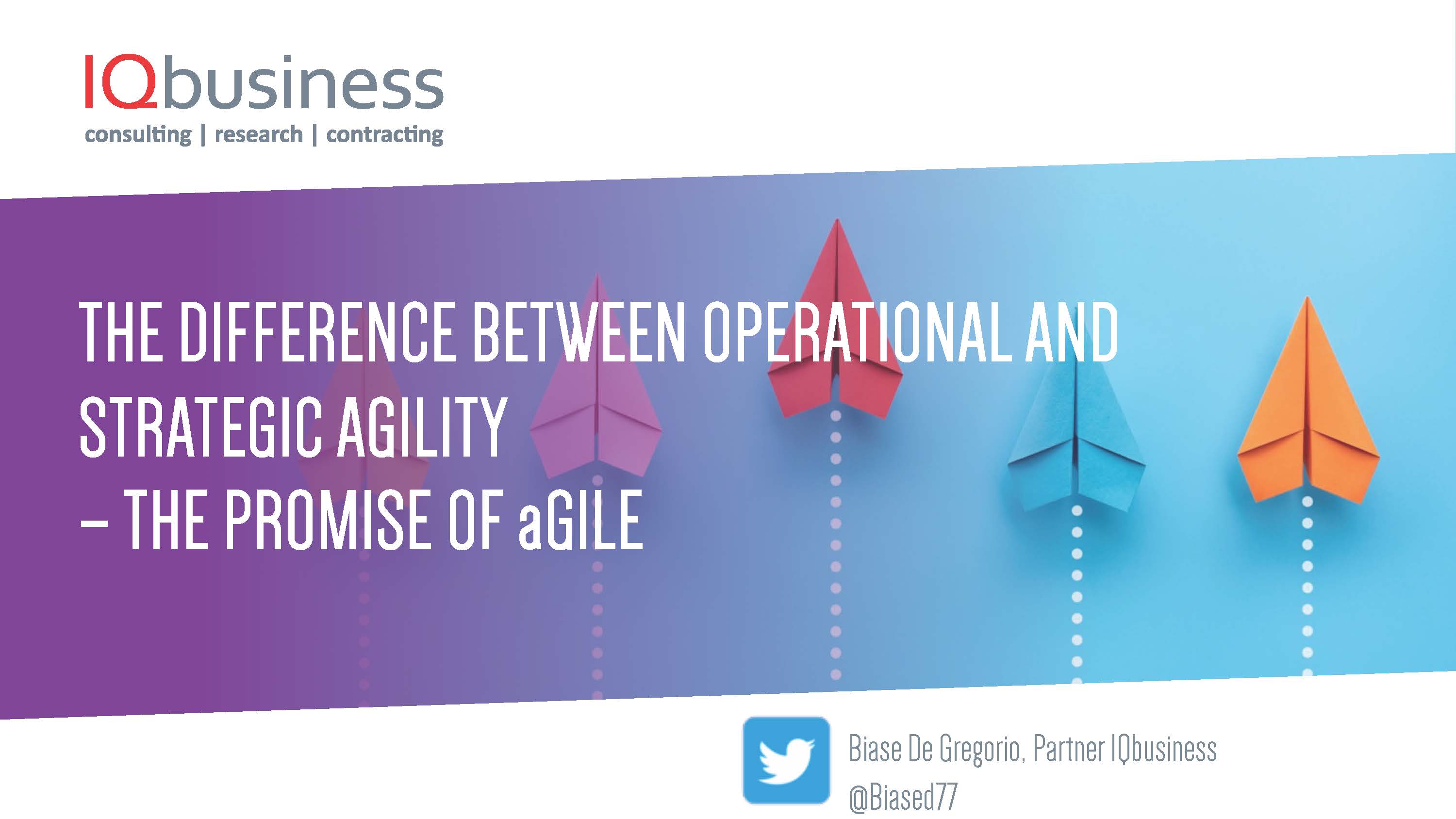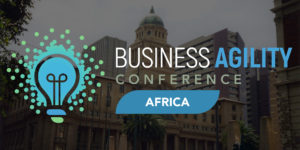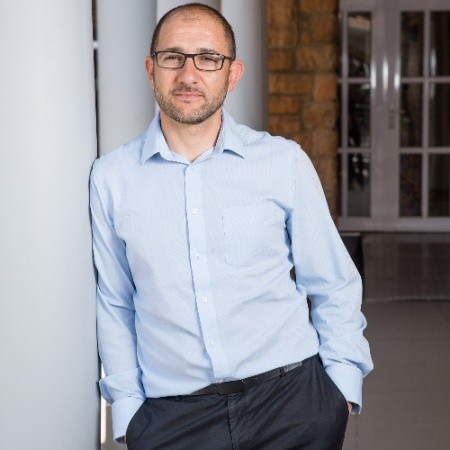So, thank you very much. Good afternoon, everybody. It's great to see you all. We talked about the difference between operational and strategic agility. As part of preparing for this talk, I was asked to share a personal story. To be honest, it's quite difficult because a lot of the organizations we've been working with are transitioning from the traditional mindset and waterfall way of working to an agile way of working. In my experience, when we talk about the promise of Agile, I’m not sure I have fully experienced that promise.
What I’m going to do today is share a couple of thoughts and ideas from other people and put them into a concise form that you can use, with some tips that you can apply after tomorrow. My feeling about these concepts is that they’re not necessarily new things being invented every day, but rather different ways to package and describe them.
Here’s a little tip on how to make things sound more important—just put the word "strategic" in front of them. Have you ever done that? If you want people to attend your meetings, call them "strategic meetings." It sounds more important, right? We don’t just have workshops; we have "strategic workshops." We don’t just do marketing; we do "strategic marketing." And when we talk about planning, it’s not just planning—it’s "strategic planning." Of course, this is a bit tongue-in-cheek, but it does make things sound more significant. This brings us to strategic agility.
One of the key domains of business agility is strategic agility, and I don’t want to downplay its importance. Based on my topic today—achieving the promise of Agile—this is something we need to consider. How do we define this? The work of Clayton Christensen, who unfortunately passed away on January 23rd, touches on this. He wrote the book Blue Ocean Strategy, which discusses market-creating innovation.
On the left-hand side, we have operational agility—making existing products better, faster, and cheaper for existing customers. This is valuable, but the challenge is that this space is highly competitive, with many market entrants and little differentiation. How do you make good money and grow in that space?
On the right-hand side, we have strategic agility—creating new markets, new products, and new customers, also known as market-creating innovation. This is what the Blue Ocean concept represents. The potential for growth in this space is massive because the market is not yet saturated. However, operational agility is still necessary to enable strategic agility.
Think about historical innovations: we had candles before we invented the light bulb, horses before we had cars, Nokia phones before we had smartphones, DVDs before we had Netflix. Strategic agility is about these kinds of transformations.
Industry Disruption
Many industries are experiencing disruption. Telecommunications companies, for example, have been challenged by the Competition Commission reducing data prices. They need to explore new ways to generate revenue, such as focusing on content rather than just data and voice services. Automakers are facing a shift as well—yes, they manufacture vehicles, but the future includes self-driving cars and software-driven business models, like Tesla is pioneering.
In healthcare, we’re seeing major changes with wearable technology, the Internet of Things, and sensors that can preemptively tell you when you need to visit a doctor. Perhaps, as was mentioned earlier today, we will even see a model where doctors are paid based on how often we don’t need to see them.
Challenges in Strategy Execution
One challenge I’ve seen is that organizations invest heavily in strategic planning. Executives meet in boardrooms, align on vision and mission, and define strategic themes. But if you look at organizations adopting Agile, many of these themes are the same: becoming more customer-centric, digital, agile, and reducing costs. These themes are often similar across industries.
Some organizations take the "build it and they will come" approach to market, rather than truly understanding customer needs. At the operational level, organizations focus on improving project execution, but the gap I see is in the operating model—how people, processes, and technology work together to enable execution.
John Kotter’s book Accelerate discusses how companies start as small, customer-centric networks of teams, but as they grow, they introduce bureaucracy, specialization, and hierarchy. Over time, the hierarchy takes over, and innovation slows down. Kotter suggests creating a dual operating system—balancing innovation and efficiency.
The Problem with Two-Speed IT
Gartner’s bimodal IT model suggests separating legacy systems (which require stability) from digital innovations (which require agility). Some organizations have adopted digital hubs, fast lanes, or separate digital teams to address this. However, the risk is that if these innovative teams still depend on slow legacy systems, their speed is limited by the slowest part of the organization.
Funding Innovation
One of the biggest obstacles to achieving Agile’s promise is how organizations fund projects. Most companies use a project-matrix structure where funding approvals take months, and resources are allocated in percentages across multiple projects. This doesn’t optimize for delivering value.
Some companies, like Standard Bank, are experimenting with funding stable teams that work within value streams rather than traditional projects. This approach decentralizes decision-making and allows organizations to prioritize the most valuable work dynamically.
Innovation and Experimentation
Kent Beck’s 3X model—Explore, Expand, Extract—describes how ideas evolve. In the exploration phase, we experiment with multiple options, following the Lean Startup approach of "build, measure, learn." The challenge is scaling successful ideas within an organization’s existing systems and processes.
Many large organizations struggle with failure. They say they want to "fail fast," but when a team actually fails, they face consequences. This damages psychological safety and discourages innovation.
Culture and Leadership
Peter Drucker’s famous quote, "Culture eats strategy for breakfast," highlights that culture is what truly drives an organization. But how do you change culture? Some say that an organization’s culture is shaped by its first 200-300 employees. Others say, "If you want to change an organization, fire everyone." Of course, that’s extreme, but it emphasizes the challenge of cultural transformation in long-established companies.
Leaders must act as gardeners—creating the right environment for people to grow. Strategy is easy to copy, but culture is not. This is why companies like Spotify say, "Don’t copy us. What works for us may not work for you."
The Victorinox Example
One of the best examples of strategic agility is Victorinox, the Swiss Army knife company. Founded in Switzerland, its goal was to create employment in its region. For 80 years, despite economic downturns, it has never laid off employees.
After 9/11, sales dropped by 30% within months because people could no longer carry Swiss Army knives through airports. Instead of layoffs, Victorinox took alternative measures: reducing overtime, shortening shifts, and finding temporary jobs for employees in other companies. They also accelerated investments into new products like watches, fragrances, and luggage, expanding into new markets like Russia, India, and China.
Victorinox survived because it matched its cultural values with actions—not just words on the wall. And guess what? They are an agile organization, even though they don’t call themselves Agile. They just are.
Thank you.





